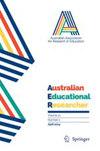Redrawing Attendance Boundaries to Promote Racial and Ethnic Diversity in Elementary Schools
IF 2.4
3区 教育学
Q2 EDUCATION & EDUCATIONAL RESEARCH
引用次数: 4
Abstract
Most U.S. school districts draw “attendance boundaries” to define catchment areas that assign students to schools near their homes, often recapitulating neighborhood demographic segregation in schools. Focusing on elementary schools, we ask: How much might we reduce school segregation by redrawing attendance boundaries? Combining parent preference data with methods from combinatorial optimization, we simulate alternative boundaries for 98 U.S. school districts serving over 3 million elementary-age students, minimizing White/non-White segregation while mitigating changes to travel times and school sizes. Across districts, we observe a median 14% relative decrease in segregation, which we estimate would require approximately 20% of students to switch schools and, surprisingly, a slight reduction in travel times. We release a public dashboard depicting these alternative boundaries and invite both school boards and their constituents to evaluate their viability. Our results show the possibility of greater integration without significant disruptions for families.重新划分出勤界限促进小学种族和民族多样性
大多数美国学区都划定了“出勤界限”,以界定集水区,将学生分配到离家近的学校,这通常再现了学校的邻里人口隔离。关注小学,我们问:通过重新划分出勤界限,我们能在多大程度上减少学校隔离?结合家长偏好数据和组合优化方法,我们模拟了美国98个学区的替代边界,为300多万小学生提供服务,最大限度地减少了白人/非白人隔离,同时减轻了旅行时间和学校规模的变化。在各个地区,我们观察到隔离程度相对下降了14%,我们估计这将需要大约20%的学生转学,令人惊讶的是,旅行时间也会略有减少。我们发布了一个公共仪表板,描绘了这些可供选择的边界,并邀请学校董事会和他们的选民评估它们的可行性。我们的研究结果表明,在不对家庭造成重大干扰的情况下,实现更大程度融合的可能性。
本文章由计算机程序翻译,如有差异,请以英文原文为准。
求助全文
约1分钟内获得全文
求助全文
来源期刊

Australian Educational Researcher
EDUCATION & EDUCATIONAL RESEARCH-
CiteScore
4.60
自引率
14.30%
发文量
81
期刊介绍:
The Australian Educational Researcher is the international, peer reviewed journal published by AARE. The Australian Educational Researcher is published three times a year and is a Thomson (ISI) indexed journal. The aim of AER is to:Promote understandings of educational issues through the publication of original research and scholarly essays.Inform education policy through the publication of papers utilising a range of research methodologies and addressing issues of theory and practice.Provide a research forum for education researchers to debate current problems and issues.Provide an international and national perspective on education research through the publication of book reviews, scholarly essays, original quantitative and qualitative research and papers that are methodologically or theoretically innovative.AER welcomes contributions from a variety of disciplinary perspectives on any level of education.
 求助内容:
求助内容: 应助结果提醒方式:
应助结果提醒方式:


